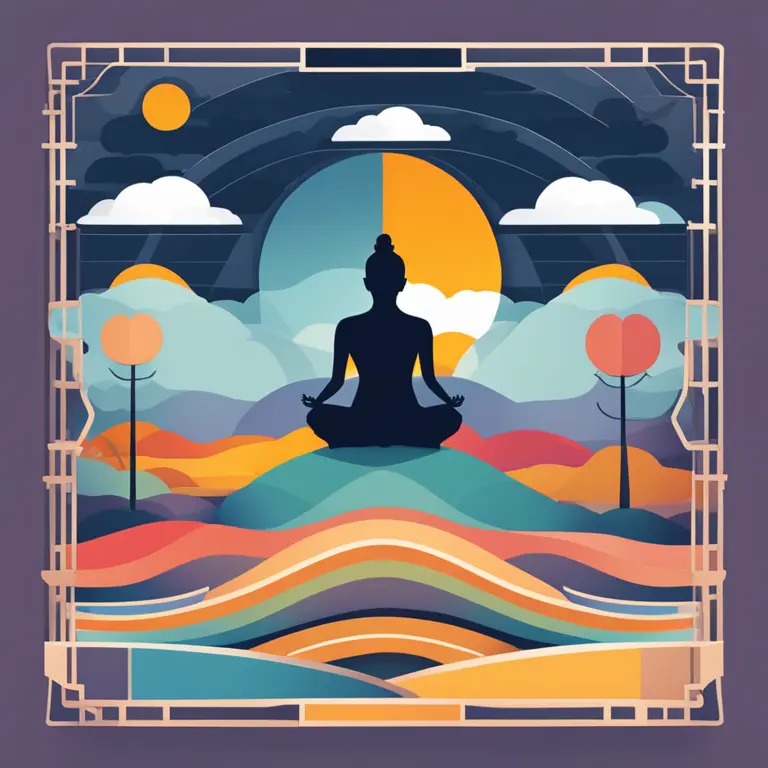
5 Meditation Techniques to Soothe Anxiety
Discover effective meditation strategies to ease anxiety and find your inner peace in today's fast-paced world.
article by Hina Kurosawa
Introduction to Anxiety Relief
Meditation has been practiced for centuries as a tool for promoting mental well-being and spiritual growth. In our high-stress modern environment, meditation can be particularly beneficial for managing anxiety. The purpose of this article is to introduce a range of meditation techniques that have been found effective in reducing anxiety symptoms. Whether you're a beginner or an experienced practitioner, these methods can help you cultivate a more tranquil mind.

The Power of Breath Focus
One of the simplest yet most powerful meditation techniques for anxiety is focusing on the breath. This practice involves slow, deep breathing, which naturally reduces stress by activating the body's relaxation response. Deliberate breathing can decrease heart rate, lower blood pressure, and bring about a sense of calm. To practice, find a quiet space, close your eyes, and concentrate on the sensation of air moving in and out of your lungs. Let any distracting thoughts pass by like clouds in the sky, always returning your focus to the breath.

Mindfulness Meditation
Mindfulness meditation encourages the practitioner to observe their thoughts and feelings without judgment. By being fully present in the moment, one can recognize anxiety-inducing thoughts and let them go without being swept away by them. Mindfulness can be done anywhere, at any time, which makes it especially useful for those with busy lifestyles. The practice involves sitting quietly, paying attention to your breath, body, thoughts, feelings, and sensations as they arise and pass. With time, mindfulness can increase emotional regulation and enhance overall well-being.

Guided Imagery
Guided imagery is a meditative process where you visualize a peaceful scene or setting, which can bring about a state of relaxation. This technique often involves listening to recordings that direct your imagination to serene locations, such as a forest glade or gentle beach. The sensory immersion in these guided narratives can divert attention away from anxiety, offering a mental escape to tranquility. As a bonus, guided imagery can be particularly appealing to individuals who find it difficult to meditate in silence or to focus on the breath.

Progressive Muscle Relaxation (PMR)
Progressive Muscle Relaxation (PMR) is a technique that reduces anxiety by tensing and then relaxing different muscle groups throughout the body. This process can make you more aware of physical sensations and helps break the cycle of mental anxiety by focusing on the body. To practice PMR, begin by tensing the muscles in your feet and progressively work your way up the body, ending with the muscles of the face. After each tension, allow a moment of complete relaxation to feel the contrast and release of stress.
Mantra Meditation
Mantra meditation involves the repetitive use of a word, sound, or phrase to focus the mind and facilitate deeper levels of relaxation. The mantra can be spoken aloud or silently repeated in your mind. It can be as simple as the word "peace" or a traditional Sanskrit phrase like "Om Mani Padme Hum." The repetitive nature of mantra chanting can help to clear the mind of scattered thoughts and bring about a state of focused calm that is helpful for reducing anxiety.
Published: 2/12/2024
Modified: 2/12/2024
More predictions
Come back here soon to learn more about yourself and your future


Calming the Mind: Meditation Practices for Anxiety Relief
Discover effective meditation techniques designed to soothe anxiety and promote tranquility in our daily lives.


Diverse Meditation Techniques for Modern Practitioners
Discover a range of meditation methods suited for contemporary lifestyles, offering pathways to inner peace and clarity.


Varieties of Meditation: A Comprehensive Guide
Discover the diverse meditation techniques to enhance your mental wellness and spiritual growth. Delve into this guide for insight into the different paths of mindfulness.